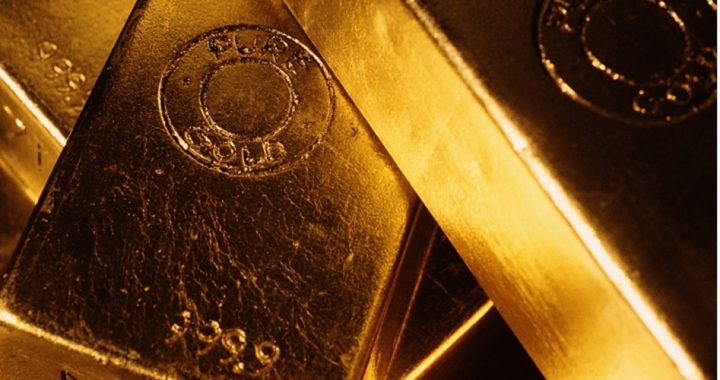
The famed Fort Knox is a facility managed by the U.S. Mint. Curiously, however, in a recent exchange of e-mails with a gold investment blog, the former director of that agency demonstrates a disturbing lack of knowledge about the precious metal supposedly stored there. And the Federal Reserve may be hiding the location and value of the allegedly missing bullion.
On July 1, Koos Jansen of goldseek.com published another in a series of posts exploring the fate of the gold allegedly kept in vaults at Fort Knox, Kentucky. In his latest article, Jansen makes some startling claims that if proven true, should instantly constrain Congress to investigate the situation with the gold inventory.
Jansen questions the accuracy and reliability of the recent audit of the reserves. In his own words, he is investigating “the audits performed on 95 % of US official gold reserves — the 7,628 tonnes stored by the US Mint — this is referred to as Deep Storage gold, 4,583 tonnes is at Fort Knox, 1,364 tonnes in Denver, 1,682 tonnes at West Point. In total US official gold reserves account for the 8,134 tonnes, owned by the US Treasury.”
Specifically, he is concerned with the biggest cache of bullion — that supposedly being held at Fort Knox.
Goldseek isn’t the first to question the federal government’s official position regarding the amount of gold held in reserve by the United Stores or the location of those bars. A quick Google search reveals that for at least the last five years, several mainstream news organizations have asked questions similar to those posed by Jansen.
For example, in 2010, CBS News published a story about the gold, questioning the veracity of the government’s claims:
Protected by a 109,000-acre U.S. Army post in Kentucky sits one of the Federal Reserve’s most secure assets and its only gold depository: the 73-year-old Fort Knox vault. Its glittering gold bricks, totaling 147.3 million ounces (that’s about $168 billion at current prices), are stacked inside massive granite walls topped with a bombproof roof. Or are they?
It’s hard to know for sure.
In 2011, CNN reported that Ron Paul (then serving as a congressman from Texas) wanted all the gold audited — the entire inventory.
“Treasury officials insist that the gold is audited annually and is all there,” the news channel reported. Paul was not willing to take the federal government at its word, however. CNN added:
During the hearing, Paul suggested that the Federal Reserve of New York, which has 5% of the U.S. gold reserves, has the ability to secretly sell or swap gold with other countries without anyone knowing.
“The Fed is pretty secret, you know,” said Paul, who leans Libertarian. “Congress doesn’t have much say on what’s going on over there. They do a lot of hiding.”
That’s right: The Federal Reserve — the ultra-secretive central bank that controls the flow of money in the United States — apparently has monopoly control over the gold, too.
Then there is this point made by U.S. News:
A proper audit would verify both the quantity and purity of the U.S. gold hoard. Ideally, each gold ingot would be individually numbered and tested and at the end a reputable nongovernment auditor such as a major accounting firm would attest a complete inventory of separately numbered ingots. This should be a fairly straightforward task. The failure to conduct the audit is perennially advanced as evidence that the gold does not exist.
Knowing what should be done only leads to the question of what is done. That is to say, just how is the gold audited and who does the counting?
Although the vaults are under the management of the U.S. Mint, it is the Treasury Department and the Government Accounting Office that do the counting.
Well, some of it. You see, the gold at Fort Knox is not counted and hasn’t been since 1986, if it even was then. But, the feds don’t admit that openly.
“We know where it is. We know how much there is. We know it’s there. None of it has been removed,” insists Treasury Inspector General Eric Thorson, as quoted by CNN.
That’s the part where Jansen — and Ron Paul — think the story falls apart. Here’s why.
First, Jansen points out that since 1986, the vaults have literally been sealed shut. The seals were wax with a ribbon running through them connected to a document declaring the vaults sealed.
“The Treasury Office Inspector General (OIG), which is currently responsible for the Deep Storage gold audits, has told me it is absolutely not routine to break the seals. Neither for inspection by a US Mint Director nor for the President of the United States will the seals be broken,” Jansen writes.
In 2010, however, the seals were broken and new, more durable plastic seals replaced the old wax ones. Here’s the story from Jansen:
At the Gold Transparency Act in 2011 the OIG stated:
More recently the Mint decided to replace all of the previously placed Official Joint Seals with new seals. The new seals are more durable, having a double security barrier seal that can only be removed by two cuts with a strong cable cutter.
The Mint replaced all of the previously placed Official Joint Seals with new ones during fiscal year 2010. The seal replacement process consisted of two steps: (1) inspection of all previously placed Official Joint Seals on all the compartments containing deep storage gold to determine whether they had been altered or compromised in any way, and (2) placement of a new Official Joint Seal. The seal inspection and replacement process was carried out for all 42 deep storage gold compartments, in the presence of a Treasury OIG auditor, by a Mint headquarter staff person, representing the Mint Director, and a Mint storage facility staff person, representing the facility’s Plant Manager. For each Official Joint Seal removed, the Mint headquarters representative, the Mint storage facility representative, and the observing Treasury OIG auditor signed an inspection report; the same parties also signed the new Official Joint Seal that replaced the one removed.
So, it’s not likely that the former director of the U.S. Mint, Edmund Moy, saw the gold ingots stored at Fort Knox, as he claimed during a speech at a coin and collectible expo in Baltimore in 2013. The report cited above issued by the Office of the Inspector General states that a “mint headquarters representative” attended the seal swap, not the director himself. Moy’s presence at the event surely would have been noted in official reports.
The next aspect of Jansen’s research also involves statements made by Moy that don’t hold up to investigation.
At the convention in 2013, Moy told attendees the following story about how the gold got to Fort Knox to begin with:
And these bars up at Fort Knox … looked like dirty gold with some corrosion on them and they’re not as yellow.… And then you realize, Roosevelt had made it illegal for Americans to physically possess gold coins, and he melted all those gold coins and that’s what ended up being the initial stock at Fort Knox. A lot of those coins were 22 karat gold which then have impurities. You know and a lot of it wasn’t refined when it was made into these bars that ended up making it into Fort Knox. When you take a look at them, at each bar, you realize what history is behind it, how many coins must have been melted in order to make the bar, and what life stories must’ve been part of all that.
Not exactly true, Jansen claims. He reports:
In 1933 gold coins in the US accounted for 2,515 tonnes, of which 1,901 tonnes were already held at banks and the government. The difference, 614 tonnes, could not have made US gold reserves increase 13,041 tonnes (from 6,505 tonnes in 1933 to 19,546 tonnes in 1940). The dramatic rise in US gold reserves was caused by imports.
Finally, what about the annual audit that detractors of the missing gold theory — including Moy himself — insist proves the gold is in Fort Knox and that none of it is missing? Jansen blows the cover off that claim, too:
The official story from OIG is that 100% of the gold stored at Fort Knox was audited in between 1974 and 1986, although there is no US government department that has the audit reports…. After the gold was audited by the Continuing Audit committee all compartments were placed under Official Joint Seal. Currently, the OIG is said to inspect the seals every year, that’s all they do.
No gold is counted, no gold is even inspected. The seals are checked and the “audit” is complete.
In a message posted to Twitter in January, 2015, Moy himself called on Congress to “authorize a comprehensive audit” of the Deep Storage gold reserves.
There are many who claim that the Federal Reserve doesn’t want a proper audit because the gold is not there, at least not all of it. Some groups believe that as part of its effort to manipulate the economy, the Federal Reserve has sold the gold.
“The gold market is being manipulated by the Fed,” says Gold Anti-Trust Action Committee spokesman Chris Powell. “It’s involved in gold swap agreements with foreign banks. Gold is a major determinant of interest rates.”
An audit would answer this crucial question. Perhaps it’s time to force open the 22-ton door that stands between our alleged gold reserves and the eyes of our elected representatives.



